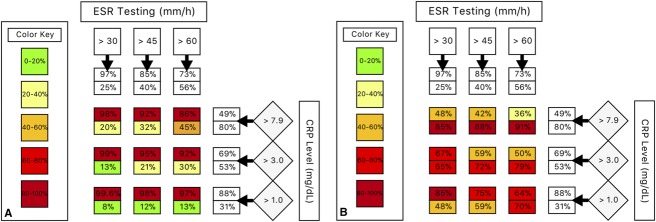Fig. 1.
(A) Using an abnormal erythrocyte sedimentation rate (ESR) or C-reactive protein (CRP) level as a positive indicator of the presence of osteomyelitis increases the overall sensitivity (top number) but reduces specificity (bottom number). Note that an ESR value of < 30 mm/h is highly sensitive, and testing CRP marginally increases the sensitivity. (B) Conversely, if both an abnormal ESR and an abnormal CRP value are considered to indicate the presence of osteomyelitis, this increases overall specificity but reduces sensitivity. Note that ESR > 60 mm/h and CRP level > 7.9 mg/dL have a specificity of 91%.

